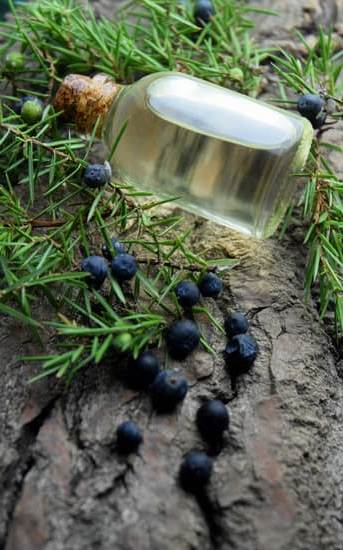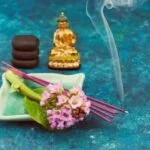Aromatherapy has long been recognized for its ability to enhance well-being and nurture the mind, body, and soul. At the heart of this practice are essential oils, concentrated plant extracts that offer therapeutic benefits through their aromatic properties. In this article, we will explore how to use essential oils for aromatherapy and delve into their many benefits and effects.
Firstly, let’s define what aromatherapy actually is. Aromatherapy is a holistic approach to healing and promoting overall wellness using essential oils derived from plants. These oils can be inhaled or applied topically, allowing their aromatic compounds to interact with our bodies and influence our physical and emotional well-being. From reducing stress and promoting relaxation to improving sleep quality and relieving headaches, the potential benefits of aromatherapy are wide-ranging and diverse.
Understanding the science behind essential oils is key to unlocking their therapeutic properties. Essential oils are extracted from various parts of plants, including flowers, leaves, bark, and roots. Through careful extraction processes such as steam distillation or cold pressing, these potent substances preserve the natural compounds found in plants that give them their unique aroma and therapeutic qualities. Each essential oil contains a combination of chemical constituents that contribute to its specific effects on the body.
In the following sections of this article, we will delve deeper into the world of aromatherapy with essential oils. We will discuss how to choose the right oils for your needs, methods of extraction, safety precautions when using essential oils, different application techniques for aromatherapy, creating a soothing atmosphere at home, targeting specific ailments with essential oils, creating personalized blends for various purposes, troubleshooting common issues that may arise during your aromatherapy practice.
With a deeper understanding of how to use essential oils for aromatherapy effectively and safely in your everyday life, you can harness their power to enhance your well-being physically as well as emotionally. Let us embark on this enlightening journey into the world of aromatherapy with essential oils.
Exploring Essential Oils
When delving into the world of aromatherapy, it is crucial to have a good understanding of essential oils. Essential oils are concentrated plant extracts that capture the natural scents and therapeutic properties of various plants. They are commonly used in aromatherapy due to their ability to promote relaxation, provide relief from specific ailments, and enhance overall well-being.
Choosing the right essential oils for aromatherapy is an essential step in getting started. With a wide variety of oils available, it can be overwhelming to decide which ones to use. It is important to consider your personal preferences and desired effects when selecting essential oils. For example, lavender oil is known for its calming properties and is often used for relaxation and sleep support, while peppermint oil has invigorating properties that can help boost energy and focus.
Understanding the different methods of extraction is also vital as it affects the quality and potency of the essential oil. Common extraction methods include steam distillation, cold-press extraction, and solvent extraction. Steam distillation is the most popular method for obtaining essential oils as it effectively captures the aromatic compounds without damaging them.
When purchasing essential oils, it is crucial to consider quality and purity factors. High-quality essential oils should be sourced from reputable manufacturers who prioritize organic farming practices and employ rigorous testing procedures. Look for oils that are labeled as 100% pure or therapeutic grade, as these indicate that no synthetic additives or fillers have been added.
By taking the time to explore different essential oils and gaining knowledge about their extraction methods and quality considerations, beginners can lay a strong foundation for their journey into aromatherapy. With this foundation in place, you can move forward confidently in creating personalized blends and enjoying the numerous benefits that aromatherapy with essential oils can offer.
Safety First
Importance of Proper Dilution for Safe Aromatherapy
While essential oils have numerous therapeutic benefits, it is crucial to use them safely. One of the most important aspects of safe aromatherapy is dilution. Essential oils are highly concentrated substances and can cause skin irritation, sensitization, or even allergic reactions if used undiluted or in high concentrations.
To ensure safety, it is recommended to always dilute essential oils before using them topically or internally. A commonly used dilution guideline is to add 5-6 drops of essential oil per ounce (30 ml) of carrier oil for general use on the body. However, this ratio may vary depending on the individual’s sensitivity and the specific purpose of use. It is best to start with a lower dilution and increase gradually if necessary.
Common Essential Oil Allergens to be Mindful of
While essential oils come from natural sources, some individuals may still be allergic or sensitive to certain compounds found in these oils. It is important to be mindful of common allergens when using essential oils for aromatherapy.
Examples of essential oils that are known allergens include tree nut oils such as almond and hazelnut, as well as citrus oils like lemon and bergamot which can cause photoallergic reactions when exposed to sunlight. Other potential allergenic essential oils include eucalyptus, tea tree, and lavender.
If you know that you have allergies or sensitivities to specific plants or substances, it is advisable to consult with an aromatherapist or healthcare professional before using essential oils. They can help you identify potential allergens and choose alternative options that will not trigger a reaction.
Consultation with a Certified Aromatherapist/Expert
Due to the potency and complexity of essential oils, consulting with a certified aromatherapist or expert can provide valuable guidance and ensure safe usage. Aromatherapists have extensive knowledge of a wide range of essential oils, their properties, and appropriate dilution guidelines based on individual needs.
Additionally, an experienced aromatherapist can offer personalized advice and recommendations tailored to specific health conditions or concerns. They can help you create custom blends that target your unique requirements, taking into account any pre-existing medical conditions or medications you may be using.
Remember, while essential oils can be beneficial for overall well-being, it is always better to err on the side of caution. By following the recommended dilution guidelines and seeking professional advice when needed, you can enjoy the benefits of aromatherapy safely and effectively.
Know your Tools
When it comes to aromatherapy, there are several different application methods that can be used to enjoy the benefits of essential oils. Knowing how to use these tools effectively will help you create the perfect aromatherapy experience.
One popular method of application is through inhalation techniques. This can be done using diffusers, which disperse essential oil molecules into the air, allowing them to be inhaled and absorbed by the body. There are various types of diffusers available, such as ultrasonic diffusers, nebulizing diffusers, and heat diffusers. Each type has its own advantages and can be chosen based on personal preference and room size.
Another inhalation technique is steam inhalation, where a few drops of essential oil are added to hot water and the resulting steam is inhaled. This method is particularly helpful for respiratory issues like sinus congestion or coughs.
Topical application is another method commonly used in aromatherapy. Essential oils can be diluted in carrier oils, such as jojoba or coconut oil, and applied directly to the skin through massage or compresses. Massage not only helps release tension in the body but also allows for better absorption of the oils into the bloodstream. Compresses involve soaking a cloth in a diluted essential oil mixture and applying it to a specific area of the body for targeted relief.
Internal use of essential oils should be approached with caution and only under proper guidance from a certified professional or expert due to potential risks involved. Some essential oils can interact with medications or cause adverse reactions when ingested. However, certain culinary applications exist where very small amounts of essential oils are used for flavoring purposes.
By understanding and utilizing different application methods for aromatherapy, you have more flexibility in incorporating these powerful essences into your daily routine. Whether you prefer inhaling their invigorating scents or enjoying their soothing effects through topical application, these methods allow you to fully experience the benefits of essential oils for your overall well-being.
Creating the Perfect Aromatherapy Atmosphere at Home
Designing a Relaxing and Invigorating Space with Essential Oils
When using essential oils for aromatherapy, creating the perfect atmosphere is essential. The environment in which you practice aromatherapy can greatly enhance the benefits and effects of the essential oils. By designing a relaxing and invigorating space, you can maximize the therapeutic properties of the oils and create a truly immersive experience.
To design a relaxing space, consider using calming essential oils such as lavender, chamomile, or bergamot. These oils are known for their soothing properties and can help promote relaxation and reduce stress levels. You can use these oils in a diffuser or create a spray by mixing them with water and misting the room.
On the other hand, if you want to create an invigorating space, opt for stimulating essential oils such as peppermint, rosemary, or lemongrass. These oils have energizing properties that can help improve focus and increase alertness. Using them in a diffuser or adding them to natural cleaning products can help create an uplifting environment.
Choosing the Ideal Diffuser for Various Room Sizes
One way to fill your space with the aroma of essential oils is by using diffusers. Diffusers disperse tiny particles of essential oil into the air, filling your surroundings with their fragrance and therapeutic properties. However, it’s important to choose the right diffuser for your room size to ensure optimal diffusion.
For small rooms such as bedrooms or offices, compact ultrasonic diffusers are ideal. These diffusers use water and ultrasonic vibrations to disperse essential oil molecules into the air. They often have built-in timers and optional color-changing lights, enhancing your overall experience.
For larger rooms such as living rooms or open-concept areas, consider using nebulizing diffusers. These devices do not require water but instead dispense pure essential oil directly into the air. Nebulizing diffusers are powerful and can quickly fill a room with fragrance, making them perfect for larger spaces.
Combining Essential Oils for the Desired Atmosphere and Effect
To create the perfect aromatherapy atmosphere at home, you can experiment with blending different essential oils. Combining oils not only creates unique and delightful fragrances but also adds layers of therapeutic benefits. Here are a few ideas for combining essential oils to achieve specific atmospheres and effects:
- Relaxation Blend: Mix lavender, chamomile, and bergamot for a calming and soothing blend that promotes relaxation and helps reduce stress.
- Uplifting Blend: Combine lemon, grapefruit, and peppermint for an invigorating blend that boosts energy levels and promotes a positive mood.
- Focus Blend: Try combining rosemary, basil, and cedarwood for a concentration-enhancing blend that helps improve mental clarity and focus.
Remember to start with small amounts of each oil when blending to achieve your desired fragrance intensity. Start by adding one or two drops of each oil and adjust as needed.
By designing the perfect aromatherapy atmosphere at home through careful selection of essential oils, choosing the right diffuser, and experimenting with blends, you can enhance your overall well-being and create a nurturing environment for your mind, body, and soul.
Targeting Specific Ailments and Conditions with Essential Oils
Aromatherapy is a versatile practice that can be used to address a wide range of ailments and conditions. Essential oils, with their therapeutic properties, can offer relief and promote healing when used correctly. In this section, we will explore some specific ailments and conditions that can be targeted using essential oils.
One common use of essential oils is for stress relief and relaxation. Many essential oils have calming properties that can help reduce stress levels and promote a sense of tranquility. Lavender oil, for example, has been shown to have anxiolytic effects and can help alleviate symptoms of anxiety. Chamomile oil is another popular choice for relaxation due to its soothing properties.
Another condition that can benefit from aromatherapy is insomnia. Essential oils such as lavender, vetiver, and valerian root have sedative effects that can promote restful sleep. These oils can help calm the mind and create a peaceful atmosphere in the bedroom. Diffusing these oils before bedtime or adding them to a warm bath can encourage deep relaxation and improve sleep quality.
Headaches, migraines, and sinus congestion are also common conditions that can be addressed with essential oils. Peppermint oil is known for its cooling effect and analgesic properties, making it effective in relieving headaches when applied topically or inhaled. Eucalyptus oil has decongestant properties that can help clear sinus congestion when used in steam inhalation or added to a diffuser.
| Ailment/Condition | Recommended Essential Oils |
|---|---|
| Stress Relief | Lavender, Chamomile, Bergamot |
| Insomnia | Lavender, Vetiver, Valerian Root |
| Headaches and Migraines | Peppermint, Lavender, Eucalyptus |
| Sinus Congestion | Eucalyptus, Peppermint, Tea Tree |
DIY Recipes
Aromatherapy can be a deeply personal and customizable practice, allowing individuals to create their own unique blends of essential oils for different purposes. By blending essential oils, you can tailor your aromatherapy experience to meet your specific needs and preferences. Whether you are looking to boost energy and focus, relax and calm the mind, or support your immune system, there are numerous DIY recipes available to help you achieve your desired outcome.
Aromatherapy Blends for Energy and Focus
When it comes to increasing energy levels and enhancing focus, certain essential oils can be particularly beneficial. Consider trying the following blend:
- Peppermint: Known for its invigorating scent, peppermint oil can help promote mental alertness and improve concentration.
- Rosemary: With its stimulating properties, rosemary oil is often used to enhance memory retention and cognitive performance.
- Lemon: The bright and citrusy aroma of lemon oil is uplifting and refreshing, providing a natural mood-booster.
Mix 3 drops of peppermint oil with 2 drops each of rosemary and lemon oils. Use this blend in a diffuser or add it to an inhaler for a quick pick-me-up during the day.
Relaxing and Calming Essential Oil Recipes
If you’re looking for ways to unwind and relax after a long day, creating a calming blend using essential oils can be incredibly soothing. Here’s a recipe that you can try:
- Lavender: Known for its calming properties, lavender oil helps reduce stress, anxiety, and promotes restful sleep.
- Chamomile: With its gentle floral scent, chamomile oil is perfect for promoting relaxation and easing tension.
- Bergamot: This citrusy oil has anxiety-relieving properties that can help induce feelings of relaxation.
Combine 4 drops of lavender oil with 2 drops each of chamomile and bergamot oils. You can use this blend in a diffuser, add it to a relaxing bath, or create a massage oil by diluting it in a carrier oil like jojoba or sweet almond.
Essential Oil Combinations for Immune System Support
When it comes to supporting your immune system, essential oils with antiviral and antibacterial properties can be valuable allies. Consider trying the following blend:
- Eucalyptus: With its powerful antimicrobial properties, eucalyptus oil helps guard against respiratory infections.
- Tea Tree: Known for its strong antiviral and antibacterial properties, tea tree oil can help support the immune system.
- Frankincense: This essential oil has been used traditionally for its immune-strengthening properties.
Mix 2 drops of eucalyptus oil with 2 drops each of tea tree and frankincense oils. You can diffuse this blend during cold and flu season or create an immune-boosting chest rub by mixing it with a carrier oil like coconut or olive oil.
Remember to always store your essential oil blends in glass bottles in a cool, dark place to preserve their potency. Keep in mind that everyone’s preferences are unique, so feel free to experiment with different quantities and combinations until you find what works best for you.
Troubleshooting
Despite the many benefits and therapeutic properties of essential oils, there can be some common issues that arise when using them for aromatherapy. It is important to be aware of these potential problems and have strategies in place to troubleshoot them effectively.
One common issue that individuals may encounter is dealing with essential oil stains and residue. Since essential oils are concentrated liquids, they have the potential to leave behind stains on surfaces such as clothing, furniture, or countertops.
To address this issue, it is recommended to always dilute essential oils before use and avoid direct contact with sensitive materials. If a spill does occur, it is important to act quickly by blotting the area with a clean cloth and then cleaning it with warm soapy water.
Another common issue that may arise is diffuser troubles and maintenance. Diffusers are popular tools used in aromatherapy to disperse essential oils into the air. However, they can sometimes experience problems such as clogging or malfunctioning.
To prevent clogs, regularly clean your diffuser according to the manufacturer’s instructions and use filtered or distilled water instead of tap water. If you encounter an issue with your diffuser not working properly, try troubleshooting by checking the power source, cleaning the device thoroughly, or contacting the manufacturer for assistance.
Lastly, some individuals may experience sensitivity or allergic reactions when using certain essential oils. This can manifest as skin irritation, respiratory discomfort, or headaches. If you do experience any adverse reactions after using essential oils, discontinue use immediately and consult a healthcare professional if necessary. To minimize the risk of sensitivity or allergic reactions, it is important to properly dilute essential oils before use and perform a patch test on a small area of skin before applying them topically.
By being aware of these common issues and implementing appropriate solutions, you can ensure a smooth and enjoyable aromatherapy experience with essential oils. Troubleshooting problems effectively will allow you to reap the full benefits of aromatherapy and enhance your overall well-being.
Conclusion
In conclusion, aromatherapy with essential oils is a powerful and effective tool for enhancing overall well-being and nurturing the mind, body, and soul. By understanding the benefits and effects of aromatherapy, as well as the science behind essential oils and their therapeutic properties, individuals can harness the full potential of these natural remedies.
Getting started with aromatherapy means exploring the basics of essential oils. It is important to choose high-quality oils that have been extracted using safe methods. Additionally, proper dilution is crucial for safe use, as certain essential oils can be allergens. Consulting with a certified aromatherapist or expert can provide valuable guidance in navigating through these considerations.
Knowing the different application methods for aromatherapy allows individuals to tailor their experience to their specific needs. Inhalation techniques such as diffusers or steam inhalation are perfect for creating an ambiance in a room, while topical applications like massage or bathing can provide direct relief to targeted areas. However, it’s important to exercise caution when considering internal use of essential oils due to potential risks.
Creating the perfect atmosphere at home for aromatherapy involves designing a space that promotes relaxation and rejuvenation. Choosing an ideal diffuser for various room sizes ensures that the aromatic molecules are properly dispersed throughout the environment. Furthermore, combining essential oils in specific ways can create desired atmospheres and effects.
Aromatherapy can also be targeted towards addressing specific ailments and conditions. Essential oils have been shown to aid in stress relief, restful sleep, headache relief, and sinus congestion. With knowledge of which oils are beneficial for each condition, individuals can tailor their aromatherapy practices accordingly.
For those interested in personalizing their aromatherapy experience even further, DIY recipes offer endless possibilities. Whether it’s blends for energy and focus or relaxing and calming recipes, experimenting with different combinations allows individuals to find what works best for them. Additionally, certain combinations of essential oils can provide support for the immune system.
Finally, it’s important to be aware of common issues that may arise when practicing aromatherapy. From dealing with essential oil stains to troubleshooting diffuser problems, being prepared and educated can help overcome these obstacles. Furthermore, sensitivity or allergic reactions to essential oils can occur, so it’s crucial to take appropriate precautions and seek professional advice if necessary.
Frequently Asked Questions
What are the 3 ways essential oils can be used?
Essential oils can be used in three main ways: through inhalation, topical application, and ingestion. Inhalation involves using a diffuser or simply inhaling the scent directly from the bottle. This method allows the aroma to reach the olfactory system and can have various effects on mood, emotions, and overall well-being.
Topical application involves diluting essential oils with a carrier oil and applying them directly to the skin. This method allows the active compounds in essential oils to be absorbed into the bloodstream, potentially providing therapeutic benefits. Ingestion is another way to use essential oils, but it should be done with caution and under the guidance of a qualified professional, as not all essential oils are safe for internal use.
How do you dilute essential oils for aromatherapy?
Diluting essential oils for aromatherapy can be done by combining them with a suitable carrier oil before applying them to the skin or using them in a diffuser. The general recommendation is to dilute essential oils at a concentration of 1-3%, which means adding 1-3 drops of essential oil per teaspoon (5 ml) of carrier oil. Some commonly used carrier oils include jojoba oil, sweet almond oil, coconut oil, and grapeseed oil.
It is important to choose a carrier oil that suits your skin type and preferences. Diluting essential oils helps ensure that they are not applied in their concentrated form, which can potentially cause irritation or sensitization.
What is the most effective way to use essential oils?
The most effective way to use essential oils depends on the intended purpose and individual preferences. Inhalation through a diffuser or direct inhalation from the bottle is often favored for emotional support and mood enhancement since it allows rapid absorption through the olfactory system into the brain. Topical application is effective for targeted purposes like relieving muscle pain or improving skin health, as it provides direct contact with the area of concern.
However, it’s important to note that proper dilution in a suitable carrier oil is necessary for safe topical use. Ingestion of essential oils can be effective for certain health conditions, but it should only be done under the guidance of a trained professional who understands the appropriate dosage and safety precautions to minimize potential risks. Ultimately, the most effective way to use essential oils varies based on individual needs and preferences, so it’s important to explore different methods and find what works best for you.

Are you looking for a natural way to improve your health and wellbeing?
If so, aromatherapy may be the answer for you.






